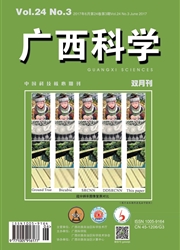

 中文摘要:
中文摘要:
【目的】研究悬浮颗粒物密度在黄渤海的空间分布特征及其对水体固有光学特性的影响。【方法】利用2014年11月以及2015年8月现场实测数据,计算得到黄渤海悬浮颗粒物密度,绘制出黄渤海悬浮颗粒物密度的空间分布图。将研究区域悬浮颗粒物密度与固有光学特性进行拟合分析。【结果】两个航次悬浮颗粒物密度的空间分布比较复杂,但整体趋势显示中层密度要小于表层和底层。在表层、中层和底层的密度分布图中,黄河口附近均有密度小值区域,山东半岛附近有密度大值区域,随着深度增加该大值区域有南移趋势。悬浮颗粒物密度与比固有光学特性cp*、bp*、bbp*拟合所得到的P值绝大部分小于0.05,与固有光学特性cp、bp、bbp拟合得到的P值全部大于0.05,而与Qce、Qbe、Qbbe拟合得到的P值多数大于0.05。【结论】悬浮颗粒物密度对比固有光学特性变化影响较大,尤其对cp*影响达到51%;对Qce、Qbe、Qbbe的变化影响一般;对cp、bp、bbp变化影响较小。
 英文摘要:
英文摘要:
【Objective】To study the spatial distribution characteristic of suspended particle density in the Yellow Sea and Bohai Sea and its impact on the inherent optical properties(IOPs)of the water bodies.【Methods】The in situ data in November 2014 and August 2015 were collected to get the suspended particle density and draw the map of spatial distribution.Fitting analysiswas conducted between the data of suspended particle density and those of inherent optical properties.【Results】In the surface,middle and bottom layers,the suspended particle density in the areas around the Yellow River Estuary was relatively low,while that around the Shandong Peninsula was relatively high.And the areas with high suspended particle density tended to move southwardly with the depth increasing.The Pvalue of the fitting between the suspended particle density and the mass-specific inherentoptical properties was less than 0.05,but the other IOPs were more than 0.05.【Conclusion】The effect of the suspended particle density is greater than 51% of the variability on the massspecific beam attenuation coefficient,and is small on the other IOPs.
 同期刊论文项目
同期刊论文项目
 同项目期刊论文
同项目期刊论文
 期刊信息
期刊信息
